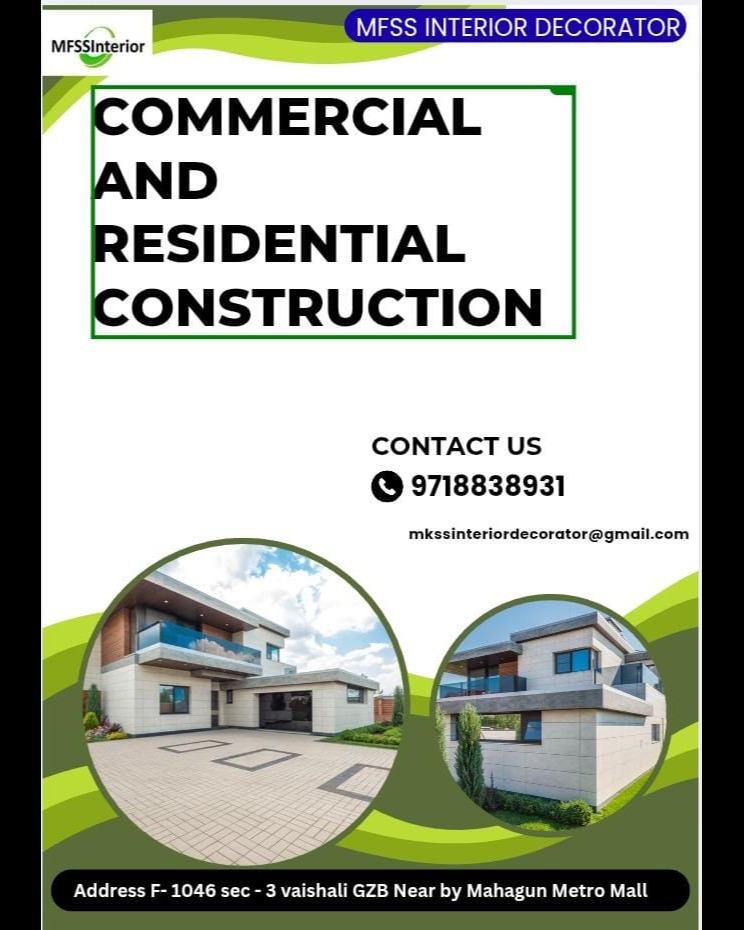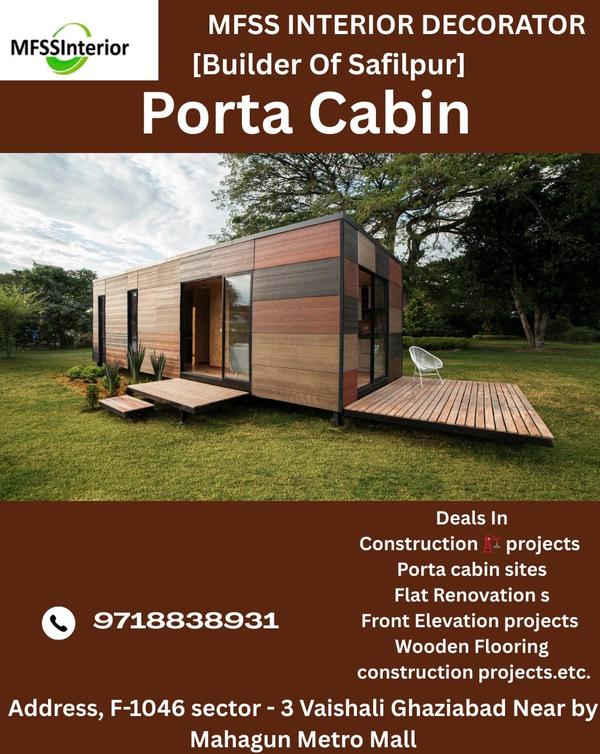
commercial and residential construction Work In Mohan Nagar

Great question — commercial and residential construction are two big branches of the building industry, but they differ a lot in purpose, regulations, and methods. Here’s a clear breakdown: 🏢 Commercial Construction Definition: Building structures for business use. Examples: offices, retail shops, warehouses, hotels, hospitals, schools, malls, factories. Key Characteristics: Scale: Often larger and more complex. Design: Functionality for business operations (e.g., open office spaces, large HVAC systems). Regulations: Stricter fire safety, accessibility, and building codes. Materials: More steel, reinforced concrete, curtain walls, elevators, advanced MEP (mechanical, electrical, plumbing). Timeline & Budget: Usually longer timelines and higher budgets. Contractors: Specialized firms (often larger, with project managers, engineers, and subcontractors). 🏠 Residential Construction Definition: Building homes and living spaces. Examples: single-family houses, apartments, condos, duplexes, villas. Key Characteristics: Scale: Smaller in scope compared to commercial projects. Design: Comfort, aesthetics, and lifestyle-driven (kitchens, bathrooms, living spaces). Regulations: Local housing codes, zoning laws, energy efficiency standards. Materials: More wood, brick, drywall, simple plumbing/electrical. Timeline & Budget: Faster build times (weeks to months, vs. years). Contractors: Homebuilders, general contractors, small construction crews. ⚖️ Key Differences at a Glance Aspect Residential 🏠 Commercial 🏢 Purpose Living spaces Business/industry Scale Smaller Larger & more complex Materials Wood, brick, drywall Steel, reinforced concrete, glass Systems Simple plumbing/electrical Heavy-duty HVAC, elevators, advanced MEP Regulations Housing/zoning codes Stricter fire, safety, ADA, structural Budget Lower Higher Timeline Weeks–months Months–years Contractors Small crews/general contractors Large specialized firms
Keywords
Subscribe for latest offers & updates
We hate spam too.


